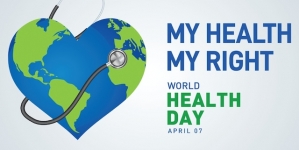-
LONDON: Indian-Origin Teen In UK Gets “Life-Changing” Cancer Treatment - April 25, 2024
-
SILICON VALLEY: All About Pavan Davuluri, New Head Of Microsoft Windows - April 25, 2024
-
LONDON: UK’s India Gate To Commemorate Role Of Indian Soldiers From World Wars - April 24, 2024
-
HARARE: Shri Bramha Kumar appointed as the next Ambassador of India to the Republic of Zimbabwe - April 23, 2024
-
LONDON: Indian-Origin Principal Wins UK Legal Challenge Over School Prayer Ban - April 23, 2024
-
TORONTO: Indian-Origin Doctor Needs ₹ 2 Crore For Legal Fees. Elon Musk Responds - April 22, 2024
-
KINSHASA: India-Democratic Republic of Congo Foreign Office Consultations - April 21, 2024
-
LONDON: UK Court Allows Sale Of Nirav Modi’s Luxury London Apartment - April 21, 2024
-
TEHRAN: Travel advisory for Iran and Israel - April 20, 2024
-
LUXEMBOURG: Shri Saurabh Kumar concurrently accredited as the next Ambassador of India to the Grand Duchy of Luxembourg - April 20, 2024
HELSINKI: Physical Activity Protects Children From Being Overweight In Adolescence Due To Digital Use In Childhood
HELSINKI: A recent study has shown that children’s
heavy digital media use is associated with a risk of being overweight later in
adolescence. The study also highlighted that physical activity protects
children from the adverse effects of digital media on their weight later in
adolescence.
The results
of the study were published in the ‘Journal of Physical Activity and Health’.
The study
showed that six hours of leisure-time physical activity per week at the age of
11 reduces the risk of being overweight at 14 years of age-associated with
heavy use of digital media.
Obesity
in children and adolescents is one of the most significant health-related
challenges globally.
The study
carried out by the Folkhalsan Research Center and the University of Helsinki
investigated whether a link exists between the digital media use of Finnish
school-age children and the risk of being overweight later in adolescence. In
addition, the study looked into whether children’s physical activity has an
effect on this potential link.
More than
six hours of physical activity per week appears to reverse the adverse effects
of screen time
The study
involved 4,661 children from the Finnish Health in Teens (Fin-HIT) study. The
participating children reported how much time they spent on sedentary digital
media use and physical activity outside school hours.
The study
demonstrated that heavy use of digital media at 11 years of age was associated
with a heightened risk of being overweight at 14 years of age in children who
reported engaging in under six hours per week of physical activity in their
leisure time. In children who reported being physically active for six or more
hours per week, such a link was not observed.
The study
also took into account other factors potentially impacting obesity, such as
childhood eating habits and the amount of sleep, as well as the amount of
digital media use and physical activity in adolescence.
In spite
of the confounding factors, the protective role of childhood physical activity
in the connection between digital media use in childhood and being overweight
later in life was successfully confirmed.
Activity
according to recommendations
“The
effect of physical activity on the association between digital media use and
being overweight has not been extensively investigated in follow-up studies so
far,” said Postdoctoral Researcher Elina Engberg.
Further
research is needed to determine in more detail how much sedentary digital media
use increases the risk of being overweight, and how much physical activity is
needed, and at what intensity, to ward off such a risk.
In this
study, the amount of physical activity and use of digital media was reported by
the children themselves, and the level of their activity was not surveyed, so
there is a need for further studies.
“A
good rule of thumb is to adhere to the physical activity guidelines for
children and adolescents, according to which school-aged children and
adolescents should be physically active in a versatile, brisk and strenuous
manner for at least 60 minutes a day in a way that suits the individual, considering
their age,” said Engberg.























